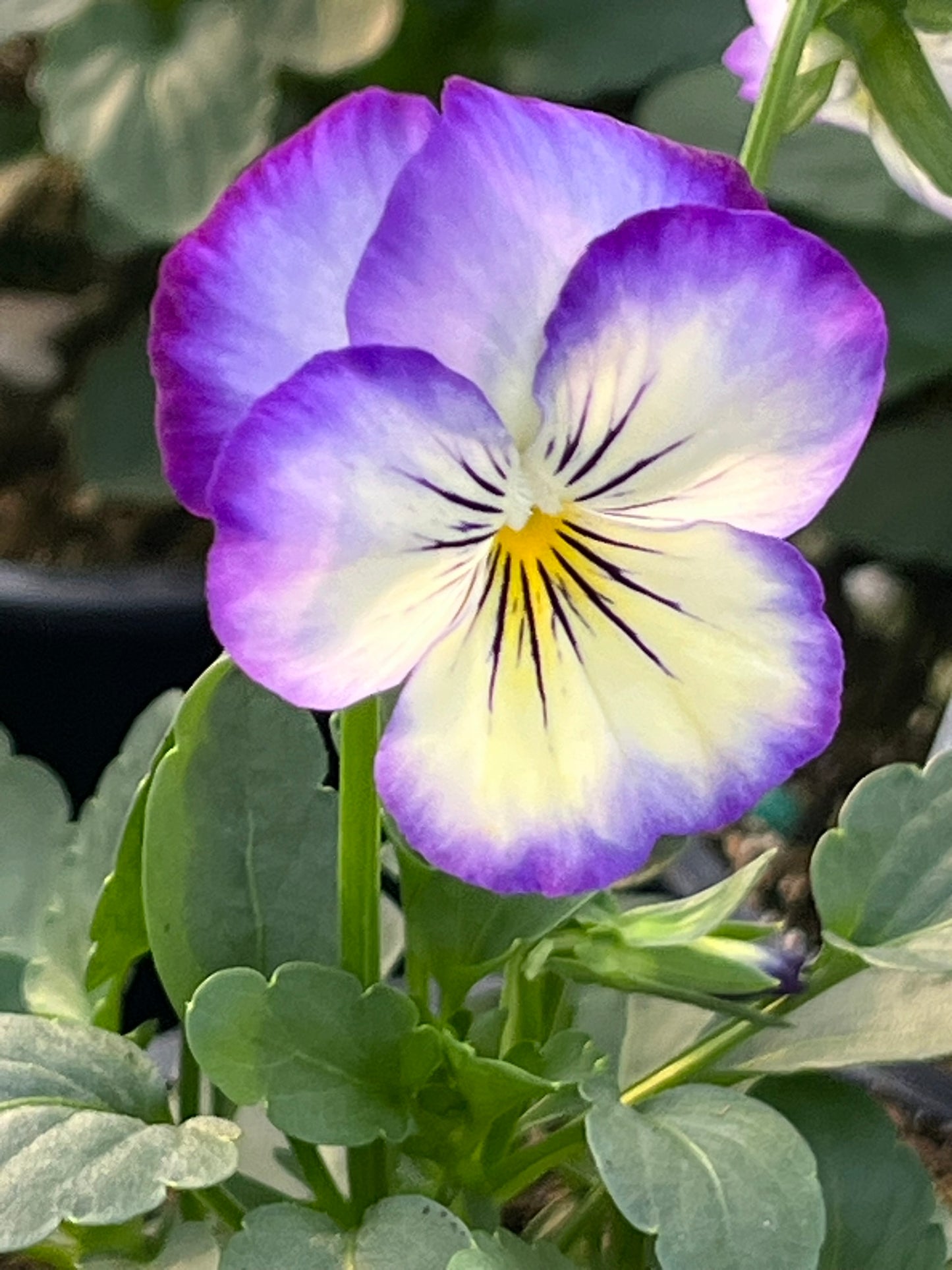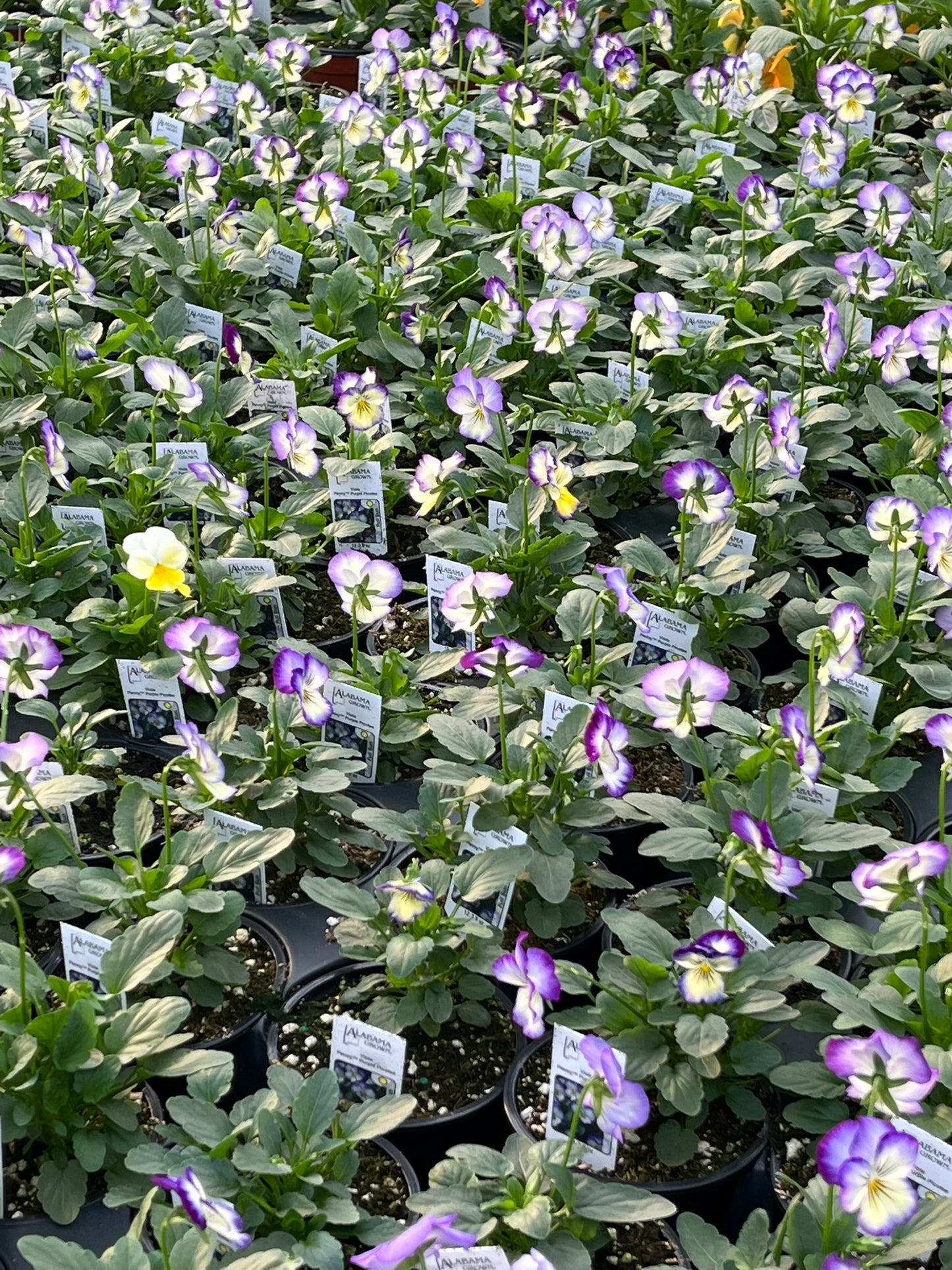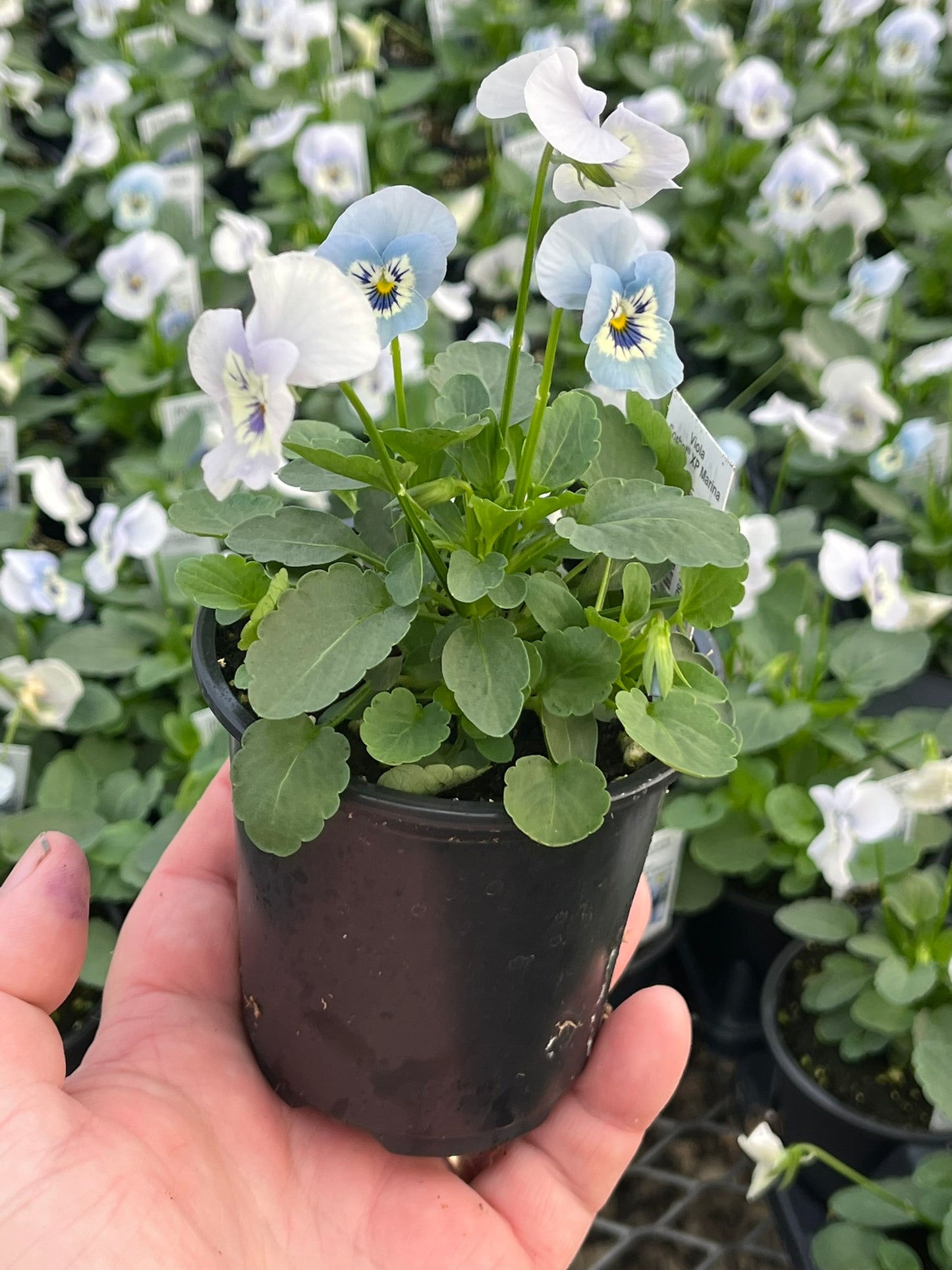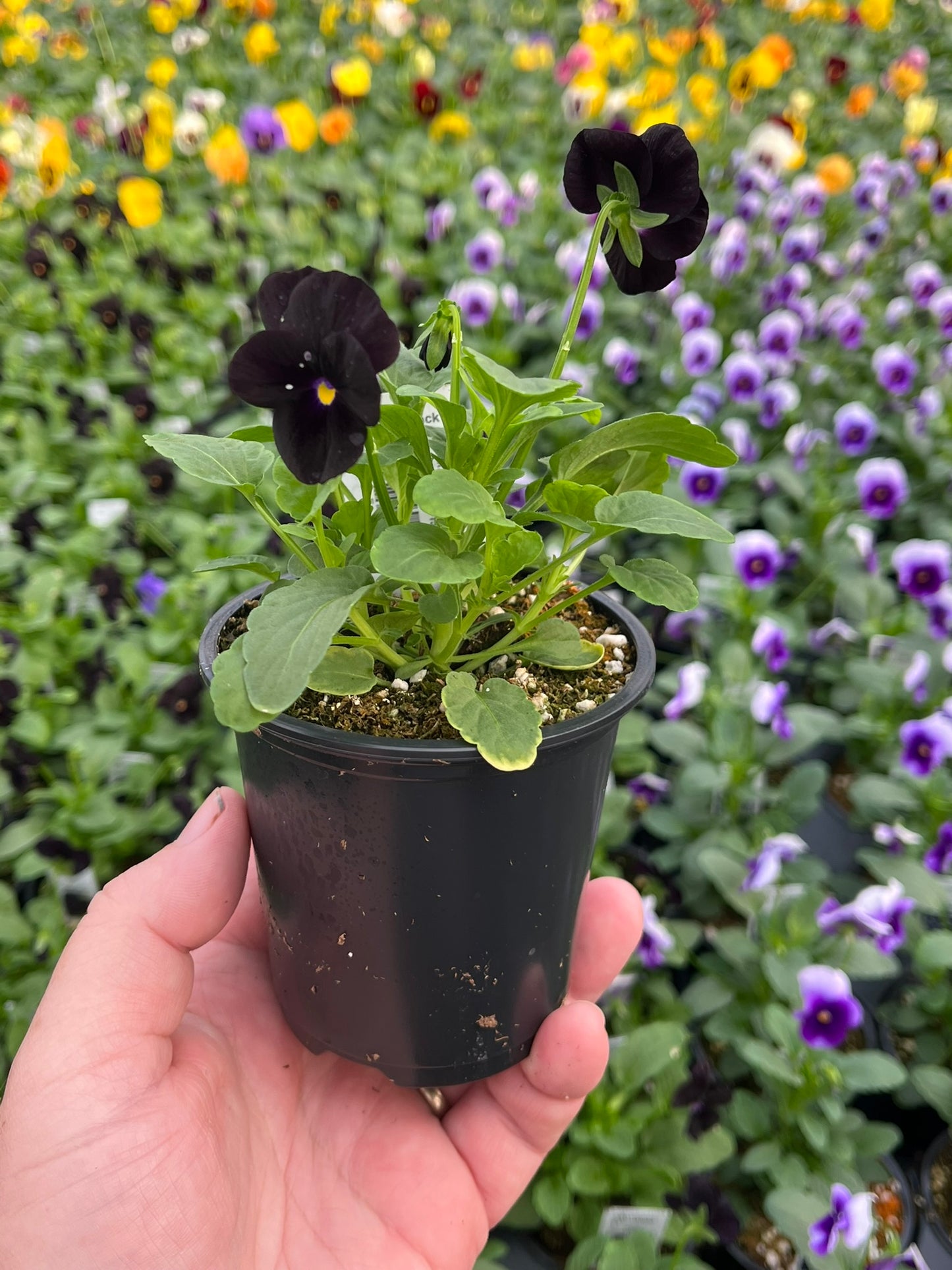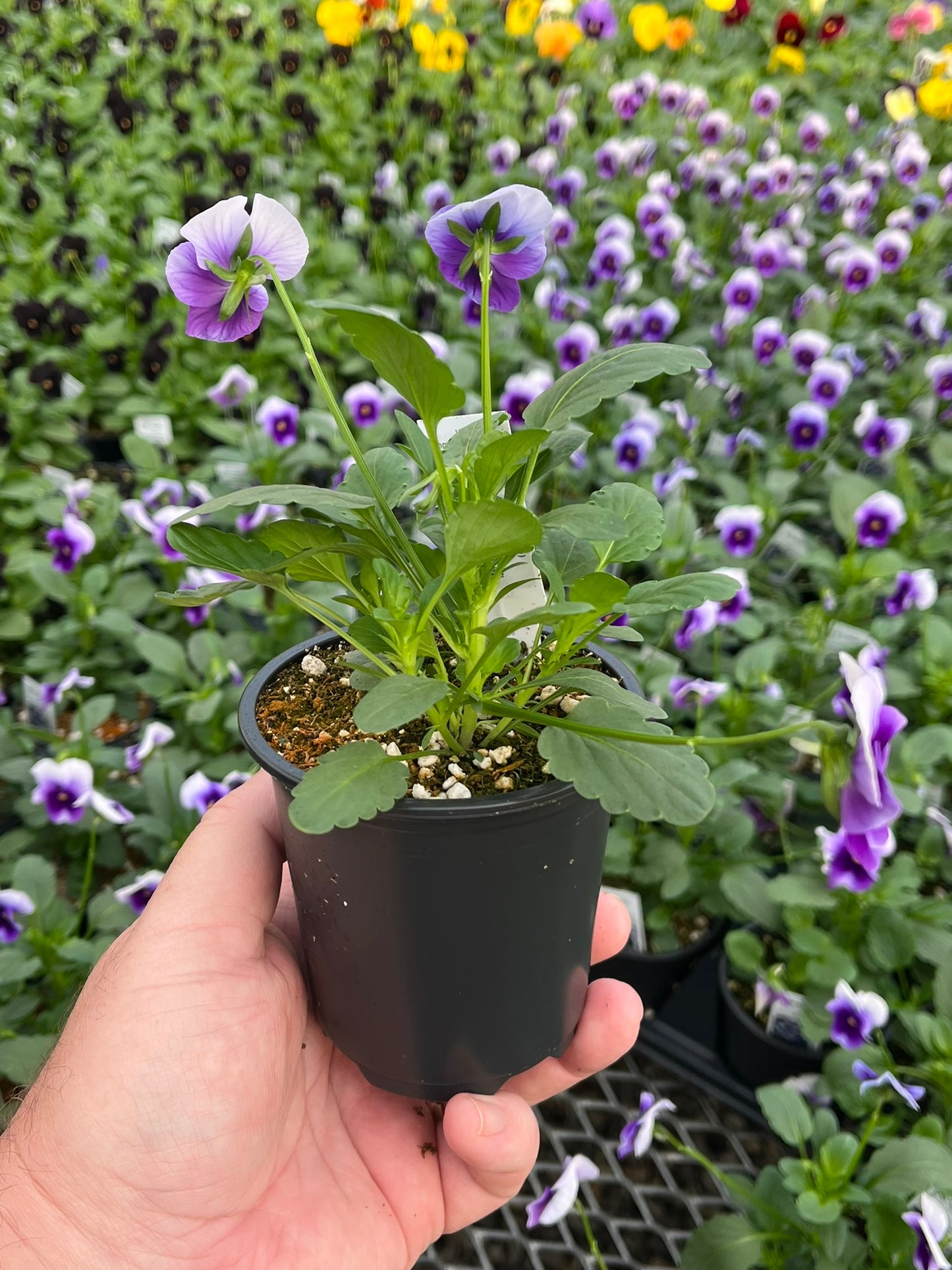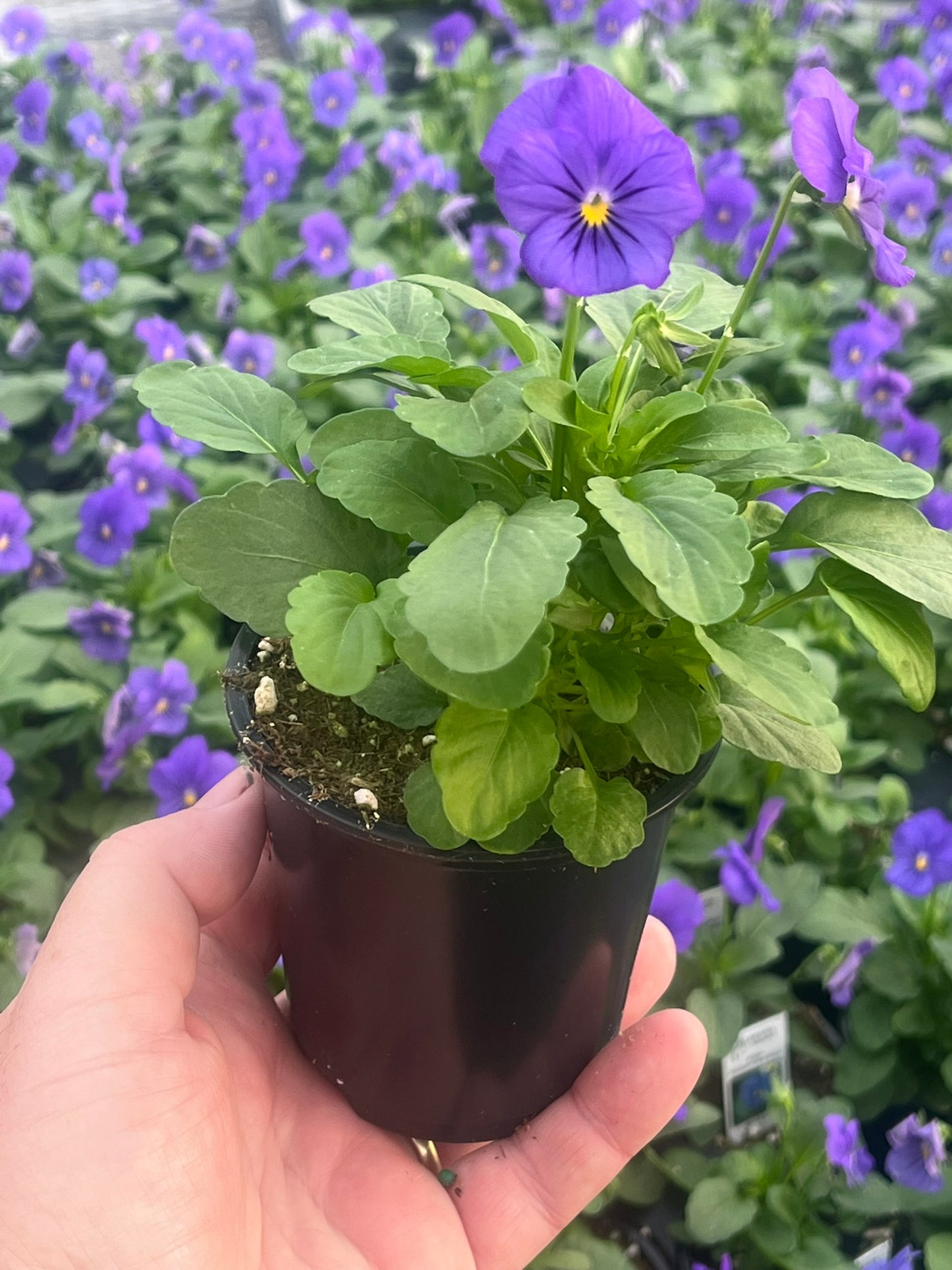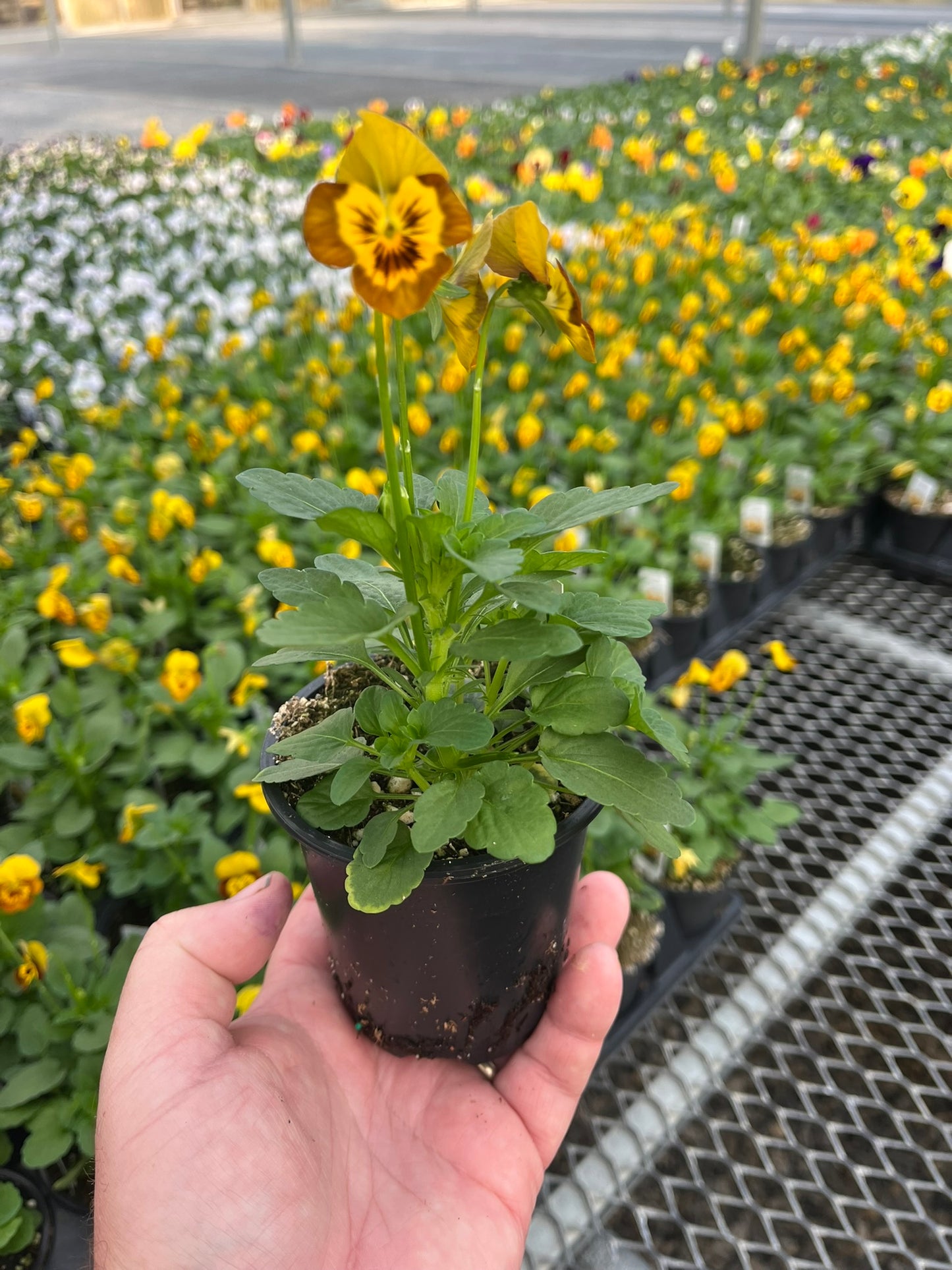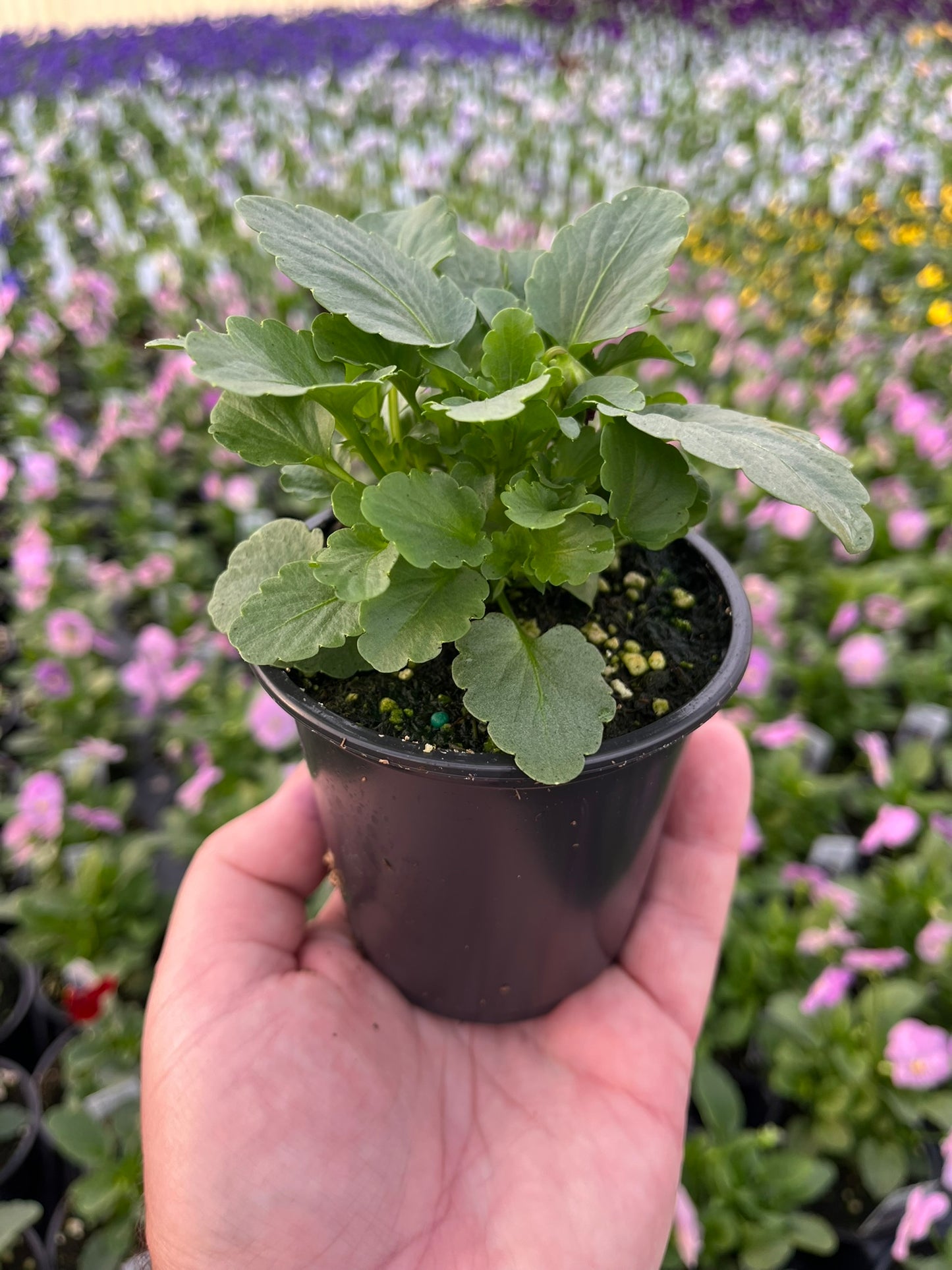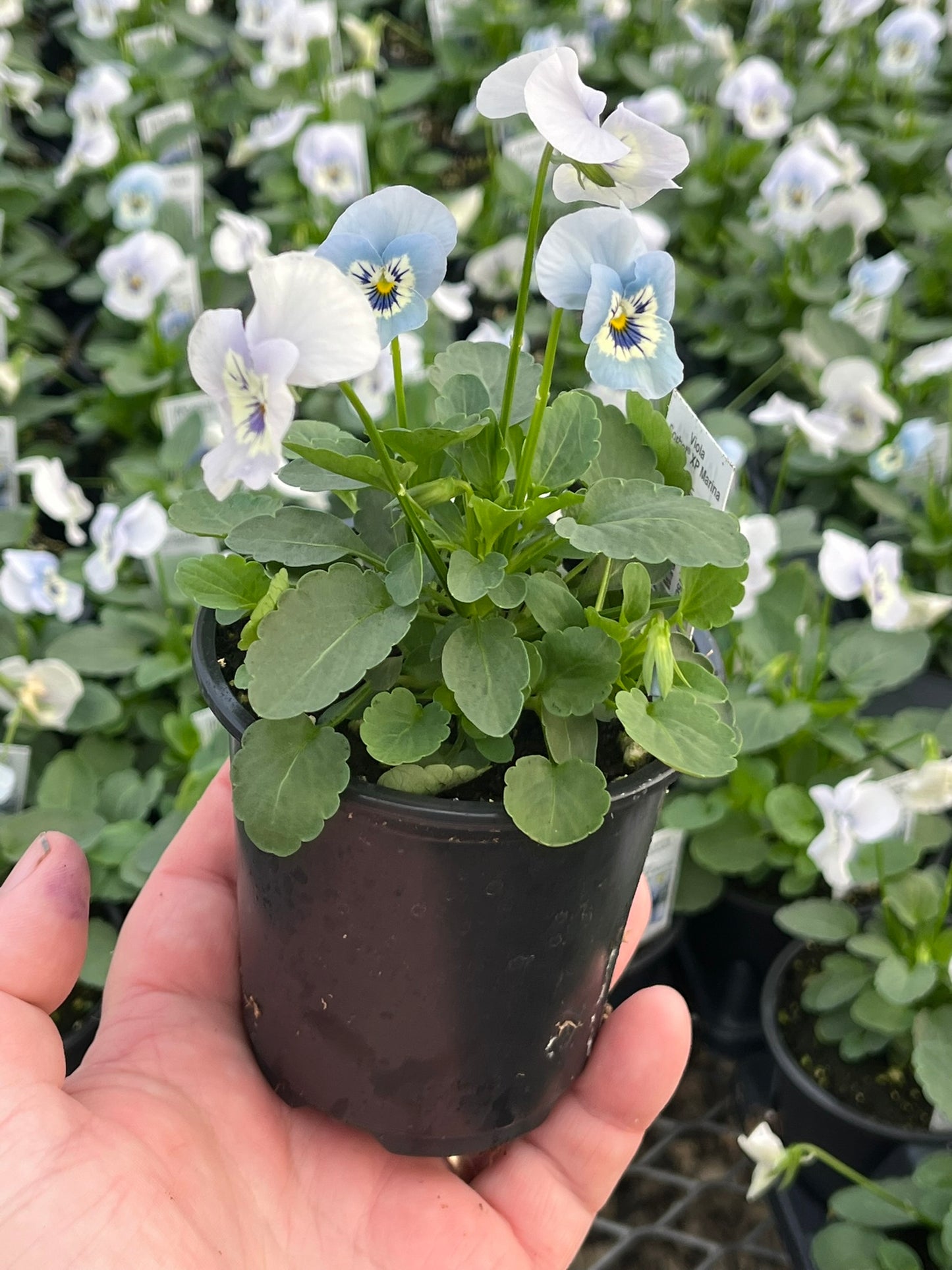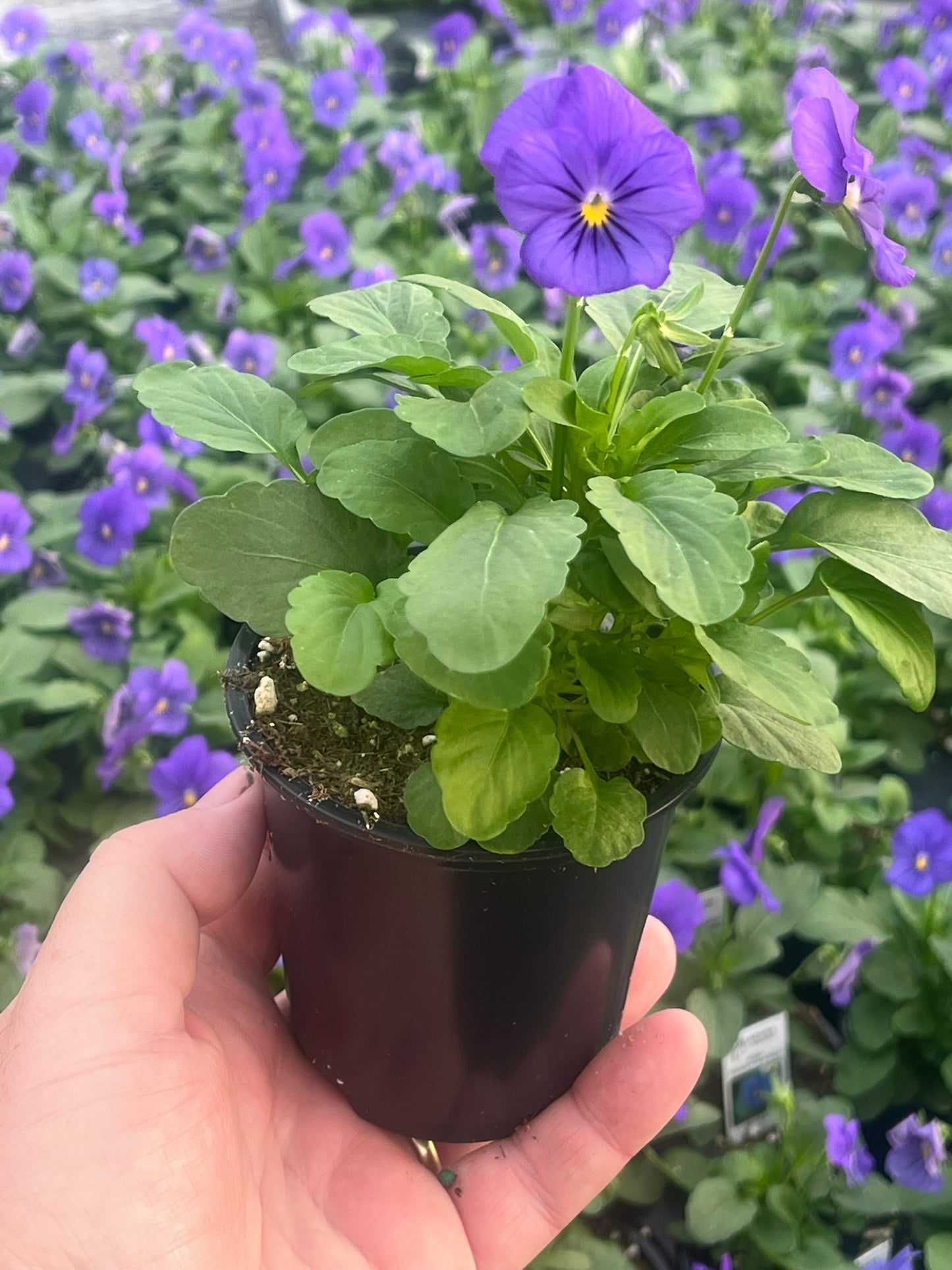Plant Hoarder
Viola, Purple Picotee
Viola, Purple Picotee
Couldn't load pickup availability
Share
Hardiness Zone:4, 5, 6, 7, 8, and 9
Sun Exposure:Full Sun and Part Shade, Mostly Sun
Viola ‘Purple Picotee’ — White-Edged Petals with Royal Flair
Want flowers that look hand-painted on crisp days? We’ve got you. Viola ‘Purple Picotee’ shows rich purple petals neatly edged in white—called a picotee rim—around a golden eye with fine whiskers. The contrast is clear and classy. Up close, every bloom feels like art. From a few steps back, the whole planting reads as a velvety purple wash with a bright, clean outline. But most of all, it blooms when many plants rest—fall, winter (in mild regions), and early spring—so your beds, baskets, and bowls keep smiling.
In other words, if you love a refined look with easy care, this is it.
Why We Love ‘Purple Picotee’
That crisp white edge changes everything. It sharpens the purple, adds depth, and makes each petal pop—even on gray days. The plants stay compact and neat, so displays look tidy without much effort. After more than a few seasons with violas, we’ve learned something simple: small flowers can carry big spaces when the color is clear and the habit stays tight.
We also love the reliability. Violas are cool-season champs. They handle light frost, bounce back after a cold snap, and keep budding in waves. Instead of waiting for summer, you get color now.
Where It Shines
-
Front borders and edging: Low, even mounds create a refined ribbon of color.
-
Containers and window boxes: Compact plants + nonstop flowers = instant curb appeal.
-
Hanging baskets: Gentle trails soften edges and bring the blooms to eye level.
-
Bulb partners: A living halo for tulips, daffodils, and hyacinths.
-
Entry accents: Two porch pots turn “hello” into a moment.
Instead of scattering pots everywhere, cluster three to five containers together. Repeating the picotee look ties the space together and feels intentional.
Quick Specs
-
Type: Cool-season annual (short-lived perennial in mild zones)
-
Bloom Window: Fall to spring in mild climates; spring to early summer in cooler areas
-
Size/Habit: About 6–8" tall × 8–12" wide; compact and branching
-
Light: Full sun to part shade (give afternoon shade as temps rise)
-
Soil: Loose, well-drained, rich in organic matter
-
Water: Keep evenly moist; avoid soggy roots
-
Perks: Cold tolerant, bee-friendly on mild days, container-ready
Color Pairings That Look Designed
The white edge makes mixing simple. ‘Purple Picotee’ anchors brights and cools pastels:
-
Purple + White: Echo the picotee rim with white alyssum or white pansies for a crisp, classic look.
-
Purple + Yellow: Happy contrast with daffodils or yellow primrose.
-
Purple + Silver: Calm, modern finish with dusty miller or artemisia.
-
Purple + Chartreuse: Fresh spark with creeping Jenny or lemon-lime heuchera.
-
Purple + Blush: Soft cottage mood with pale pink tulips or stock.
Instead of mixing ten partners, pick two or three and repeat them across the bed. The rhythm feels smooth and polished.
Planting: A Simple Start
-
Choose the spot. Sun to part shade is ideal. As days warm, a touch of afternoon shade extends bloom.
-
Prep the soil. Blend in compost for drainage and steady moisture.
-
Set spacing. Plant 8–10" apart so foliage meets at maturity for a full carpet.
-
Water in. Soak after planting to settle soil around roots.
-
Mulch lightly. A thin layer reduces splash and keeps moisture even.
Container Tips We Use
-
Pick pots with real drainage holes.
-
Use a high-quality potting mix (not garden soil).
-
Add slow-release fertilizer at planting; boost with a gentle liquid feed every 2–3 weeks.
-
Rotate pots every week for even sun and shape.
Care: Easy Steps, Big Return
-
Water: Keep soil evenly moist. Not bone-dry. Not soggy.
-
Feed: Light, regular feeding = more buds over a longer season.
-
Deadhead: Pinch off spent blooms. In other words, remove the old to invite the new.
-
Shear if leggy: Trim lightly by one-third; fresh growth follows fast in cool air.
-
Heat note: When real heat arrives, bloom slows. Swap to summer annuals, then bring violas back in fall.
Seasonal Rhythm You Can Trust
Violas love crisp nights. In Zones 7–10, plant ‘Purple Picotee’ in fall for winter-to-spring color. In colder zones, set plants as soon as the soil can be worked in spring. You’ll enjoy flowers until early summer warmth settles in. After more than one season, the pattern feels natural: cool season = viola season.
Design Moves That Always Work
-
Bulb halo: Ring tulips or daffodils with a low band of picotee violas for a pro finish.
-
Pathway ribbon: Edge walks with a steady line that guides the eye and cleans up borders.
-
Monochrome bowl: Fill a shallow bowl with all ‘Purple Picotee’ for a sleek, gallery look.
-
Porch pair: Two urns with violas and a rim of white alyssum echo the petal edge perfectly.
-
High-contrast trio: ‘Purple Picotee’ + chartreuse foliage + silver dusty miller = balance and pop.
Companion Ideas
-
Cool flowers: Pansies, alyssum, lobelia, nemesia
-
Foliage friends: Dusty miller, lamb’s ear, heuchera, ornamental kale
-
Spring bulbs: Tulips, daffodils, grape hyacinths
-
Herb accents: Thyme or sage for a soft cottage touch
These partners share similar needs, so care stays simple and results stay strong.
FAQs — Quick Answers
Does ‘Purple Picotee’ have fragrance?
Yes—a light, sweet scent on mild days. It’s gentle and pleasant.
Will pollinators visit?
Bees stop by on warmer days. The open blooms are easy to land on.
Sun or shade?
Full sun to part shade. In warm regions, give afternoon shade to stretch the season.
Can I use the flowers in the kitchen?
Many gardeners use viola blooms as garnish. Only use flowers grown without chemicals and confirm edibility for your needs.
Seeds or starter plants?
Both. Starter plants give instant impact. Seeds are great for mass plantings and budget projects.
Troubleshooting: Fast Fixes
-
Fewer blooms? Deadhead often and feed lightly. Check for too much shade.
-
Yellowing leaves? Improve drainage and ease up on water.
-
Plants stretching? Shear by one-third; fresh growth follows quickly in cool weather.
-
Heat slump? Replace with summer annuals; replant violas when temperatures drop.
Instead of fighting the season, move with it. Violas reward that rhythm.
What You’ll Receive
Depending on timing and listing, Viola ‘Purple Picotee’ is offered as robust starter plants for beds and containers or as premium seed for sowing. Either way, you start with clean, vigorous stock and that refined white-edged bloom. We focus on healthy roots and fresh growth so you can plant with confidence.
How We’d Use It This Week
Start at the front entry. Fill two containers with ‘Purple Picotee’, then tuck white alyssum along the rim to mirror the petal edge. Edge a sunny path with the same viola for a pulled-together look. After more than a week, buds open in waves. Keep moisture steady. Snip old blooms. Enjoy the crisp, royal glow every time you step outside.
White-Edged Wonder — Plant, Smile, Repeat
